Dactylorhizas, the Marsh-orchids and Spotted-orchids, are amongst the showiest and exotic wildflowers in our North-Eastern countryside, but nevertheless, two of our six species are very common. They attract a good deal of interest and attention when they flower in June and July.
Of the two common species, the Northern Marsh-orchid, Dactylorhiza purpurella, is the earlier to flower, often by the start of June. It produces stout flower-spikes of a rich purple. These may be up to 15 cm or more long, when they are very showy and conspicuous, although they are often much shorter. In parts of Co. Durham, they are known as ‘Wild Hyacinths’, a name which owes more to superficial appearance than botanical accuracy!
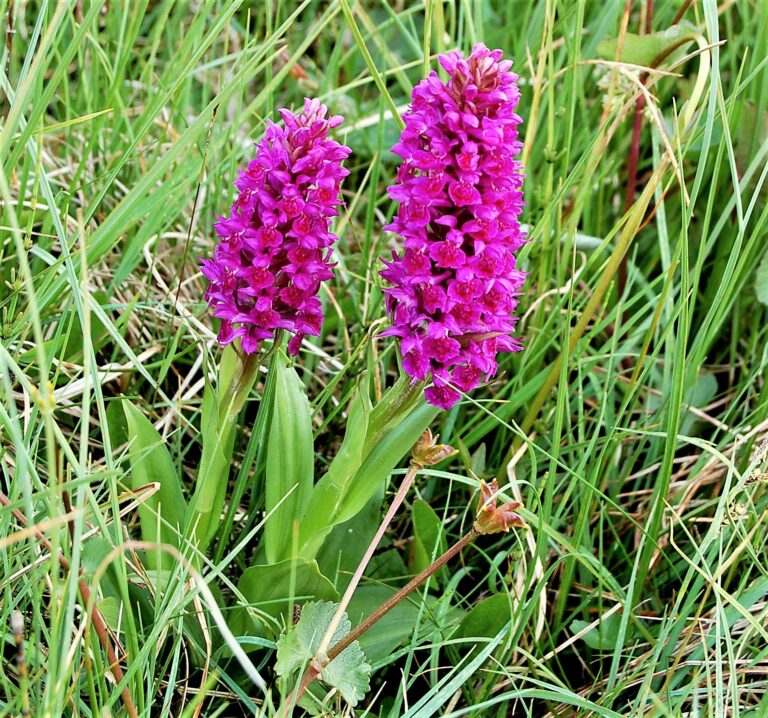
Each flower has a lip (‘labellum’) which acts as a landing platform for visiting bees. In fact the bees are fooled, because the flower contains no nectar in its spur, or loose pollen. Nevertheless they receive enough visits for many flowers to receive pollinia (pollen packages) from the flowers of other plants, so that abundant seed is often set. In the Northern Marsh-orchid, the lip is bluntly angled and scarcely toothed. The broad leaves are unspotted or have a few transverse lines.
This is a plant of open, often ‘brownfield’ sites, typically with a heavy, clay-rich soil, although they are also found in quarries, old railway lines, central reservations of dual carriageways and species-rich grasslands, especially on limestone and sand-dunes. As with all orchids, the seeds are very light, and carried on the wind, so new, open sites are often rapidly colonised, and this includes gardens. They have become quite a (welcome!) menace in my alpine troughs and plant containers!
The other common Dactylorhiza is the Common Spotted-orchid, D. fuchsii (named for the same Herr Fuchs as the, frequently misspelt, Fuchsia!). This flowers later, even into early August. It has spikes of pale purple, lilac or even whitish flowers, and the lip has three deep lobes, of which the central is slightly the longest. The leaves are heavily spotted above, and there are several non-sheathing narrow leaves at the top of the stem which are missing in Northern Marsh-orchid. Again, it is a very common and widespread plant, but is more often found in shady places, even in light woodland. It also frequently invades gardens.
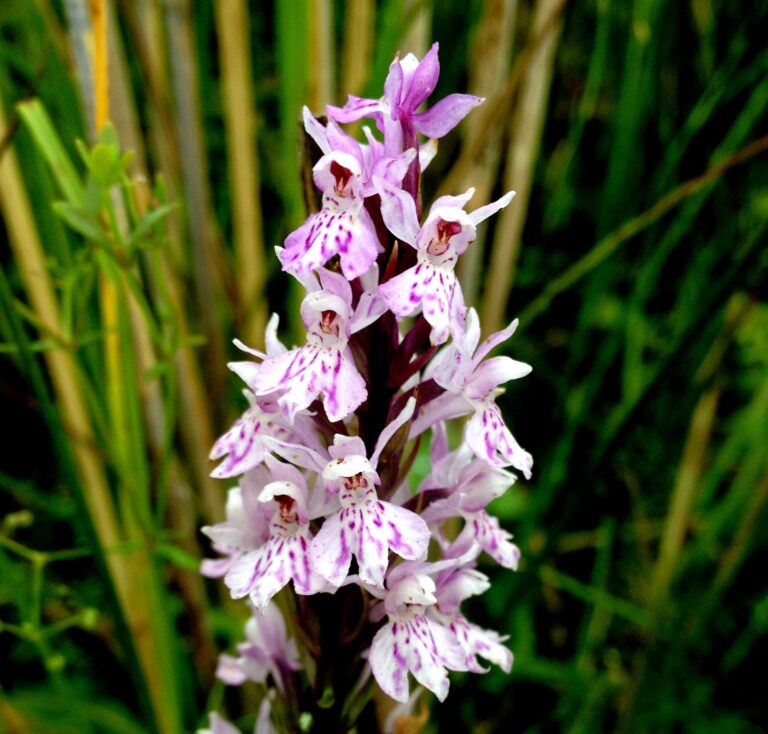
When these two species occur together, which is often the case, they hybridise readily, and the hybrid itself is quite fertile, so a range of different intermediates can be found. They vary in flower colour, lip lobing, leaf spotting, non-sheathing leaf number, and other features. Often they are large, vigorous plants, which tower above their parents in stature.
We now come to the four less common Dactylorhizas in the North-East. Each of these is more of a geographical and ecological specialist than the two common species. The first to flower is the Early Marsh-orchid, D. incarnata. This occurs in wet, lime-rich habitats, which in our area involves two very different environments. It occurs where lime-rich water emerges from springs in the uplands, having passed through underlying limestone, even though neighbouring habitats may be very acidic. However, it is also found in coastal grasslands, where ‘slacks’ between sand-dunes provide a moist soil made lime-rich by the shell fragments in the sand. Holy Island and parts of Druridge Bay have good examples of this habitat. This is usually a rather small plant which is distinguished by the lip being folded back lengthwise. The flowers are varied in colour. Many are a flesh-pink, but others are purple and a few almost white.
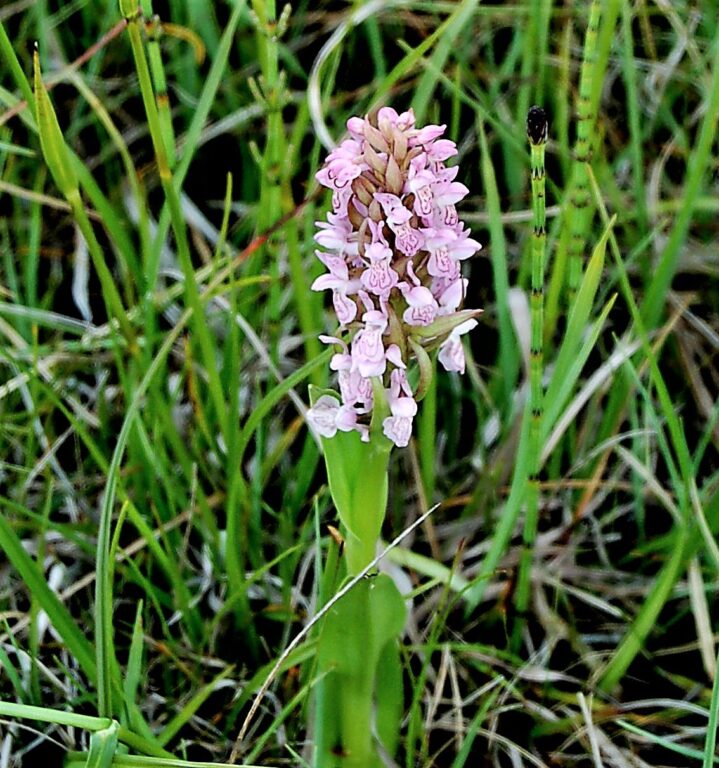
Our other spotted orchid, D. maculata, the Heath Spotted-orchid, flowers from late June, and is found in damp, often marshy, acidic conditions mostly in the uplands. It is scattered in its distribution and is frequent in some areas, but is inexplicably absent from others. It is a showy plant with lilac to whitish flowers with a large lip which is shallowly lobed so that the central lobe is shorter (and smaller) than the two outer ones. Compared with the Common Spotted-orchid, the leaves are narrower, and the markings on the lip are fewer. The Heath Spotted-orchid will hybridise with both the Common Spotted-orchid (often hard to diagnose!) and the Northern Marsh-orchid, although it does not often grow together with these species.
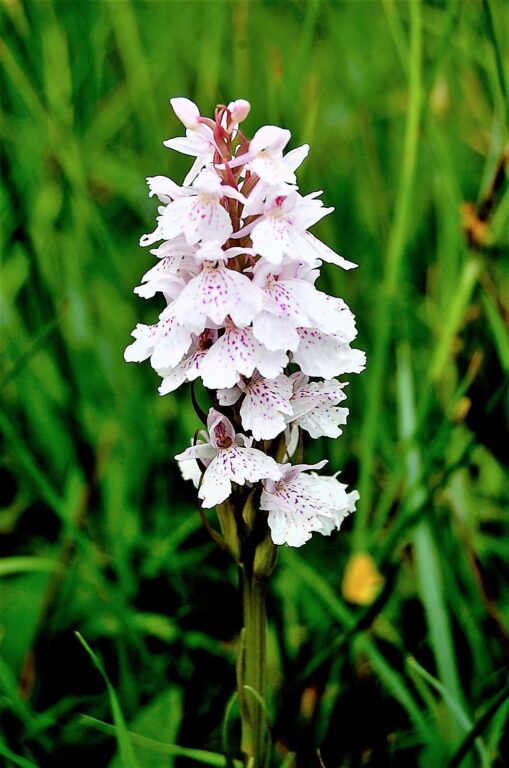
We live right on the northern limit of the Southern Marsh-orchid, D. praetermissa. This has been known on Teeside for many years, but has only colonised Tyneside in recent decades. It has been known at Shibdon Pond, Blaydon for some years, but has now crossed the Tyne and occurs in some numbers at Warkworth Woods, adjacent to Newcastle Great Park. It is a large and handsome plant with flowers of a clear pink and a large and almost unspotted lip which is scarcely lobed.
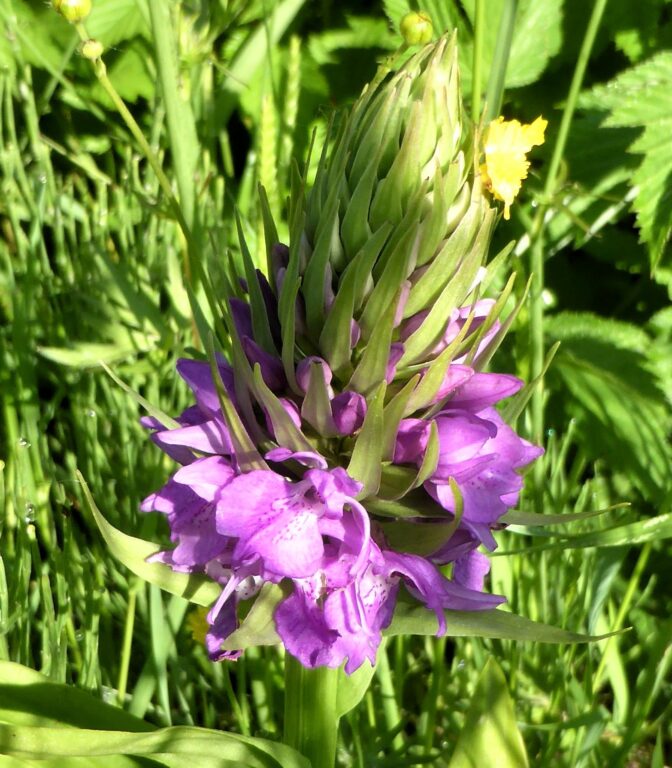
We come at last to our greatest rarity, the Narrow-leaved Marsh-orchid, D. traunsteineroides. This has lax flowers of a pale rosy-purple, on which the lip has a middle lobe that exceeds the side lobes. It is best known for its very narrow leaves, usually less than a centimetre wide. It is also notable for its habitat, quite wet lime-rich fens, although very spotted forms from northern Scotland are found in wet acidic sites. The correct identity of this plant has been subject to much discussion, but DNA studies have recently shown that it is not the same as the similar continental plant known as D. traunsteineri, and is in fact only known from the British Isles. At times, forms of Northern Marsh-orchid with narrow leaves have been mistaken for Narrow-leaved Marsh-orchid, and this may be true for plants from the Roman Wall district, and parts of Co. Durham, including the Seaton Carew dune slacks. However, the genuine article has been known from Newham Fen, near Seahouses, for many years, where it was last recorded in 2011.
As a coda, it should be mentioned that the Frog Orchid, Coeloglossum viride has recently been reclassified by some botanists as a Dactylorhiza, D. viridis, on the basis of molecular evidence. However, other workers consider this evidence less than conclusive, and as the Frog Orchid remains in Coeloglossum in the latest version of Clive Stace’s ‘New Flora of the British Isles’, this is good enough for me!
By John Richards, Vice-county recorder of plants for the Botanical Society of Britain and Ireland